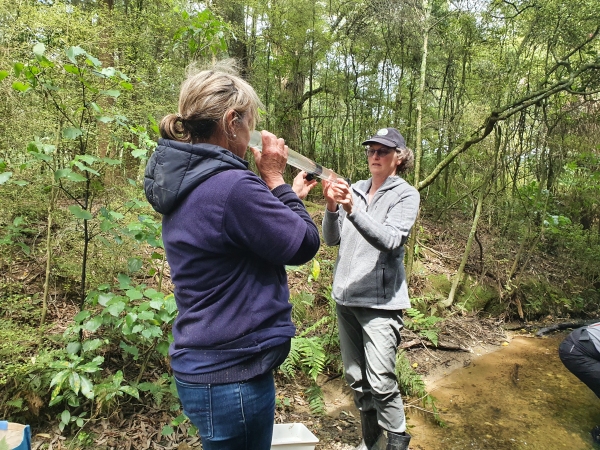Work is underway to develop a proposed national quality assurance (QA) framework for community-based monitoring (CBM) of Aotearoa New Zealand’s freshwaters. The plan is to create a tiered system of standards and measures to ensure that data relating to a suite of commonly measured freshwater variables are of a known quality and ‘fit for purpose’. This plan has been informed by a recently completed report looking at overseas approaches to QA.
Throughout the country, CBM provides a wealth of data that has the potential to inform freshwater management. This QA project, led by Juliet Milne (NIWA) and championed for the regional sector by Greater Wellington Regional Council, aims to create a framework which will help support councils, as well as government organisations and industry, to better utilise the growing volume of data collected through citizen science.
Juliet says, “there is an increasing interest to tap into community-based monitoring data to assist councils with freshwater management and reporting but, as with data collected by any sector, we need systems in place to ensure and verify that data collected by volunteers are of known quality and ‘fit for purpose’.”
A national increase in recognition of CBM by environmental organisations of its potential benefits, has resulted in the development of standardised sampling protocols, monitoring tool kits, websites, and other resources. These resources, together with various national freshwater guidelines and National Environmental Monitoring Standards (NEMS), provide a solid basis to inform the development of a national QA framework. Implementation of other recently released freshwater legislation including the National Policy Statement for Freshwater Management (NPS-FM) could also be supported by CBM monitoring data.
“In addition to collecting data for their own interest, understanding and use, community members can support collection of data at finer spatial and temporal scales than in professional programmes, as well as from geographically remote locations. This means CBM has the potential to help offset some of the rising cost of increased freshwater monitoring associated with recent freshwater legislation, says Juliet.
Development of the framework will take two years and will be built around a selection of freshwater variables relevant to stream health.
“The NPS-FM 2020, in establishing that all freshwater must be managed for the national values of ecosystem health, human health for recreation, mahinga kai and threatened species, provides the basis for a set of mandatory attributes that can be incorporated into the framework,” says Juliet.
The development of the framework is a multi-agency effort being supported by a large number of organisations.
“As well as MBIE Envirolink funding, we are grateful for additional support from NIWA, Hill Laboratories, Environment Canterbury, Greater Wellington Regional Council, EOS Ecology, DOC, DairyNZ, StatsNZ and from two of the National Science Challenges (Our Land and Water and Biological Heritage)” says Juliet.
The QA framework will be initially designed around variables of relevance to freshwater ecosystem health, recreation and mahinga kai. However, it is hoped that the basis of the framework will be transferrable to other environmental domains such as marine and terrestrial.
While a national QA framework will provide the basis for the collection of CBM data to consistent standards, realising the full potential benefits of CBM will also require an on-line host or hosts for CBM data, as well as ongoing support and feedback for CBM groups, both to sustain their motivation and to ensure data quality is maintained. The issues of CBM data stewardship was the subject of a multi-stakeholder workshop convened by NIWA and funded by Our Land and Water in December last year. “Overall, greater coordination of existing CBM initiatives and support efforts, including a strategy for data management and sharing, would greatly advance the consistency, value and benefits of CBM in New Zealand”, says Juliet. The workshop report is available here.

